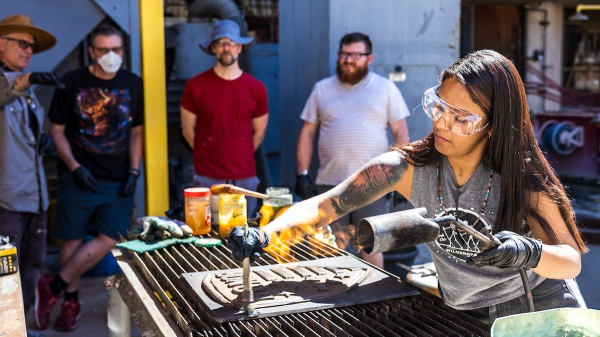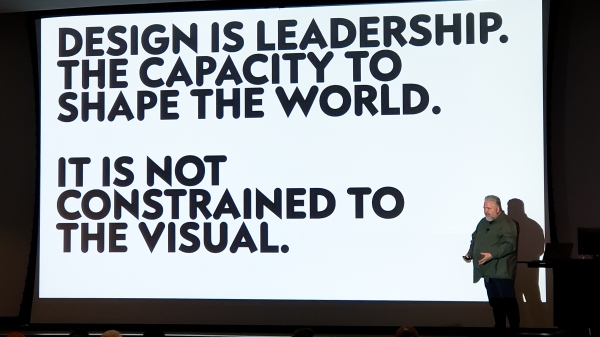If these walls could talk …
ASU graduate finds authentic — and often underrepresented — ancient Roman voices in the graffiti of Pompeii

Editor’s note: This is part of a series of profiles for spring 2018 commencement.
Great works of literature may easily stand the test of time, but they rarely capture all the perspectives a culture or era had to offer. To get the full human story, you sometimes have to look in untraditional places, where people of all backgrounds communicated from the heart and off the cuff.
That realization is part of what inspired Alexa Rose, a graduating senior from Arizona State University's School of Human Evolution and Social Change, to take a closer look at ancient graffiti in the city of Pompeii.
“When I went there two years ago for field school, I picked up a book on the subject, and almost every day after closing hours I wandered around looking for graffiti,” she said.
Rose is no stranger to ancient cultures. Her majors — anthropology and classical civilizations — have opened the door to numerous scientific and cultural explorations during her time at ASU, including the study of archaeological ceramics with the Center for Archaeology and Society and the creation of databases at the Teotihuacan Research Laboratory in Mexico.
These experiences allowed Rose to quickly see the value in Pompeii’s ancient graffiti — as mini time capsules chock-full of cultural insights and new research potential.

Rose takes in the view on the streets of Pompeii.
“This graffiti spoke to me because it really is the voice of the Romans,” she said, including those such as gladiators, women, and children, whose perspectives may have been marginalized in official histories.
Rose went on to create a database and then a typology for these pieces, grouping them into categories: romantic, religious, insulting, violent, greeting, etc. Besides the message itself, clues such as grammar, use of image versus text, language complexity and graffiti location gave her insight into each creator’s possible literacy level and social standing.
Given that graffiti is an ever-evolving medium still used by people today, the resulting data also lends an interesting perspective on modern trends. Differences from its past use certainly exist, but many of the core reasons for its creation remain the same, including the desire to be heard and to make a personal connection with strangers.
“A lot of graffiti is sexual or insulting in nature, but Romans also had a tendency to create kinder graffiti that offers statements like ‘hello’ or ‘good wishes’,” Rose said.
Question. What was your “aha” moment, when you realized you wanted to study anthropology?
Answer: I remember walking into the Center for Archaeology and Society’s pottery room and thinking, “This is the right place for me.”
Q: What’s something you learned while at ASU — in the classroom or otherwise — that surprised you or changed your perspective?
A: There are too many to choose from, honestly. I think one of my favorite moments from my undergraduate career is hiking the Pyramid of the Sun in Teotihuacan, Mexico on my birthday last year.
Q: What’s the best piece of advice you’d give to those still in school?
A: Take advantage of all of the opportunities at ASU!
Q: What was your favorite spot on campus, whether for studying, meeting friends or just thinking about life?
A: The School of Human Evolution and Social Change undergraduate student lounge.
Q: What are your plans after graduation?

Rose plans to pursue a master's degree in classical archaeology.
A: I recently founded a nonprofit for an accessible online Latin tutoring website and am currently curating archaeological documents at the Digital Archaeological Record for the Digital Archive of Huhugam Archaeology project. I plan to pursue a master’s degree at Brandeis University in classical archaeology and continue fieldwork in Pompeii, studying graffiti and archaeological ceramics.
Q: If someone gave you $40 million to solve one problem on our planet, what would you tackle?
A: I would make all field schools free so more students have access to learn about archaeology.
More Arts, humanities and education

'Devils in the Metal': ASU vet leads iron cast workshop for former service members
Bruce Ward believes everyone has a symbol of strength or resilience, and they have an obligation to find it. His happens to…

ASU English professor wins Guggenheim Fellowship for poetry
The awards — and opportunities — keep piling up for Safiya Sinclair, an associate professor in Arizona State University’s…

Designer behind ASU’s brand named newest Herberger Institute Professor
Bruce Mau, co-founder and CEO of the Chicago-based holistic design consultancy Massive Change Network, has joined Arizona State…